AtWork
The Fun Story
When people ask me how I started photography, I usually reply that I just picked up a camera and hung on to its straps for a wild 47-year adventure.
This adventure has taken me from living on two continents and traveling to over 60 countries worldwide on assignment, sometimes traveling with Royals and Presidents and other times covering the Olympics, Superpower Summits, and natural and man-made disasters.
It all started back in junior high school in 1973. I learned still film photography, and black and white film development using a Pentax Spotmatic F. I worked on the high school annual, which, when I think about it, was probably the first front page photo I took.
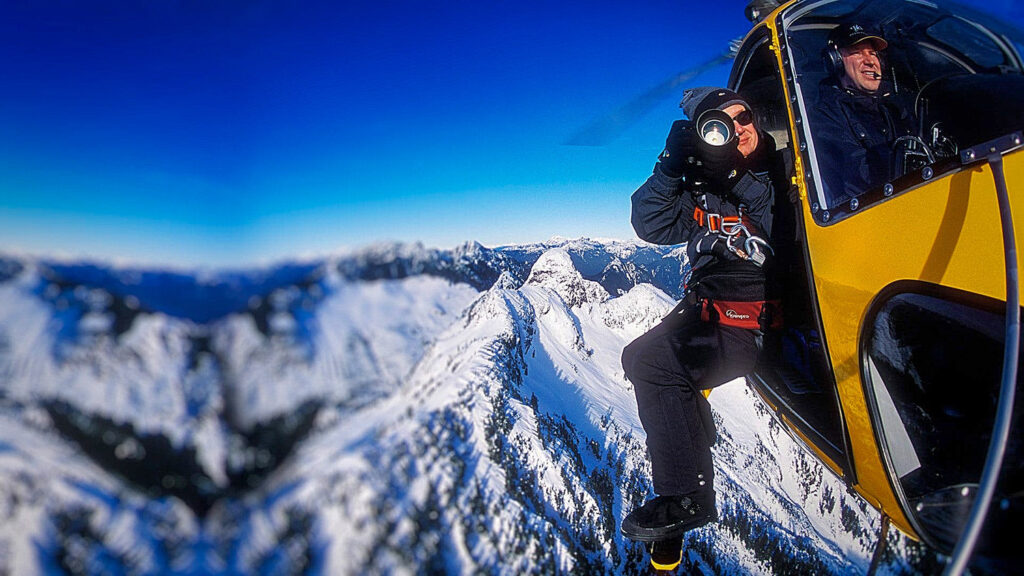
On assignment for Lowepro
After graduation in 1975, while working at a cedar mill in Haney, British Columbia, all I could dream about was traveling and mountaineering with my new Konia T3 Auto reflex camera. And in 1976, I left the mill and went to work as a photojournalist for a weekly free newspaper called The Progress. It was the best job in the world, covering local sports, features, and news (using a police radio to monitor breaking news assignments). And besides, I was now a real photographer carrying my new Nikon camera on the job.
After a few months as a photographer at the Progress, I got a position at the competing weekly newspapers The Haney Gazette and the Coquitlam Herald.
Working in community journalism is exciting and fun. Still, every year the same events roll around, and after the second time, I was hungry for more and wanted to be a daily newspaper photographer.
I left community newspapers in 1979, and things started moving fast. It was after that my career shifted into high gear. The next stop was the Vancouver Daily Courier (the Courier went Daily during the strike at the Vancouver Sun and The Province) and the little upstart Courier. Eventually, the Courier closed its doors, and my next stop was to Edmonton and the Edmonton Sun. I had acquired more Nikon gear and started dressing the Animal part on the 1970s show Lou Grant.
At the Edmonton Sun (a racey newspaper by Canadian standards), it was a non-stop job working with the photo staff. And we worked hard and hung out with each other, and I worked every day and loved it. The job was challenging as we had to shoot black and white film, and when a big situation warranted it, we shot color transparency film. It meant we not only had to make decisions on section Front Page images for color, but we also had to hand process it for the deadline.
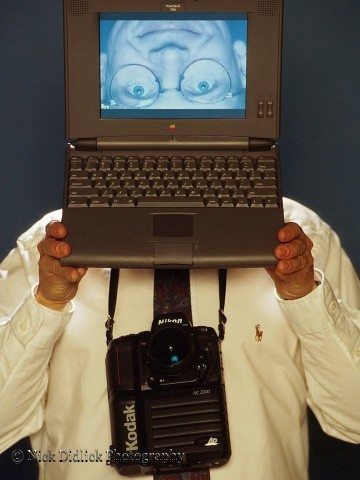
After just 11 months at the Edmonton Sun, I moved away from newspapering to work in the wire service world for United Press Canada (UPC), the United Press International (UPI) affiliate in Canada. I remember getting the call from Bob Carroll, UPC’s Picture Chief, on a cold Edmonton December evening -26c asking me to start work for UPC based in Vancouver, a balmy +8c. I felt like he had rescued me, and I went from covering a Canadian Province to covering all of Canada with assignments worldwide.
Working from my own office in downtown Vancouver I covered significant sports and news events across Canada and the USA. And at 25, I started traveling internationally to cover events in South America and Europe.
I covered my first Olympics in Sarajevo at the Winter Olympics in 1984. When the Reuters News agency started a Photo Service in January of 1985, they came calling with an offer for me to move to Brussels, Belgium, to work for them. I was to be a millionaire working for 1.3 Million Belgian Francs (which was paid in part with Ticket Restaurant tax-free meal tickets).
I was almost always on the road based in Brussels and later in London, England. From Moscow to Seoul and practically everywhere in between, I covered news, sports, politics, and feature assignments and learned to grunt and point in 17 different languages to get things done.
There was always an emotional and physical price to be paid when traveling the world extensively in the age before the Internet, and I had food poisoning seven times and dysentery twice. There were always issues with Customs, planes, trains, automobiles, and endless nights in hotels, where often, when waking up, I needed to figure out what country I was in and what city or assignment I was working.
So after nearly ten years on the road for UPC and Reuters wire services, a few awards, and many precious memories shared with dear friends, I decided to leave wire service work and head back to Vancouver to enjoy a better lifestyle. After three months, I landed a job at the Vancouver Sun, a position I had tried to get in 1977-1979.
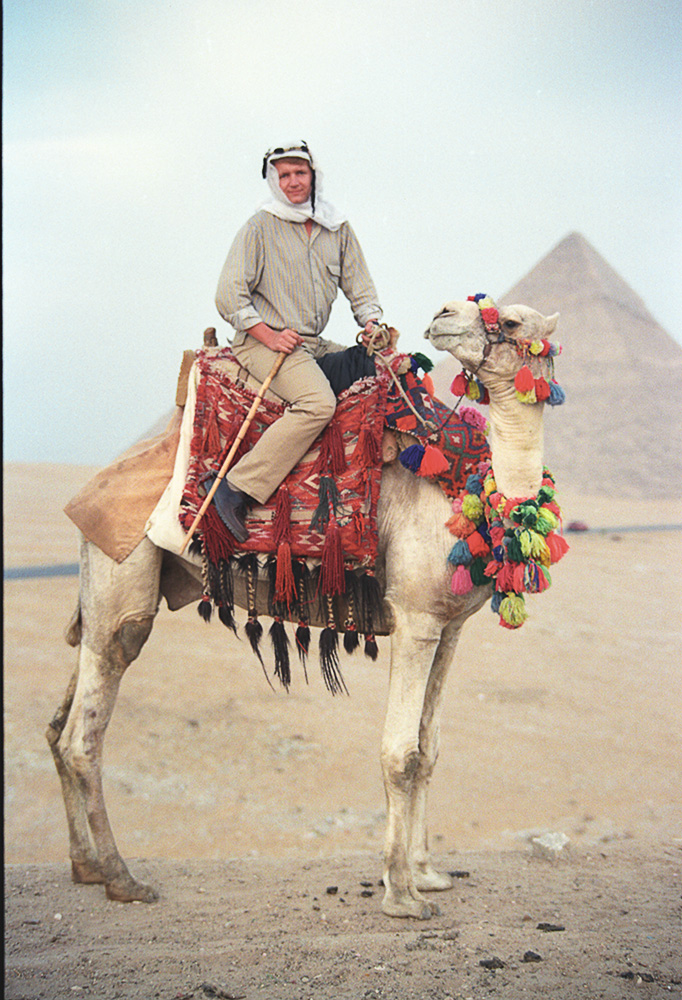
Working at the Vancouver Sun was a great experience after ten years in the hot seat in wire service work. I had time to collaborate with reporters to work on feature photography and in-depth story coverage. The pace was slower, and I could take more time to plan photographs.
In February of 1994, I learned of a new camera called the NC 2000. I quickly became the change leader at the Vancouver Sun, converting the photo department and that of its sister paper, The Province, into all Digital Photo Departments, the world’s first newspapers to do so.
During this year, I also became a digital imaging consultant working with Kodak and, eventually, others to develop hardware and software for the slowly growing digital photography market.
In 1995 I decided to learn how to program web pages as the web was exploding around me, and I wanted to know more. But web visuals were hard to integrate because of the slow speed of dial-up internet connections like CompuServe.
After a short stop at the National Post in 1999 (at the time Canada’s newest National Daily newspaper), where I set up their photo operation from the ground up, I eventually left the Vancouver Sun to become a National Photo Correspondent for the National Post, joining their West Coast bureau. (Vancouver is a difficult city to move away from, and I describe living in Vancouver to colleagues as career-limiting).
Then in 2001, I left newspapering and started my own business as a freelance editorial and commercial photographer and digital imaging consulting.
In 2004 I shot my first commercial video job on a Sony Z1. I was intrigued by the difference between the Still and Video mediums and started leveraging them in my business.
As editorial photography assignments started to pay less and become less frequent in 2005, I ramped up my consulting and videography skills to fill the void and add web design and 360 image capture to my list of skills. I remembered the “Diversify or Die” quote and was doing just that.
It is hard to believe that I have been running my business for over 20 years.
I have taught photography and videography for Nikon USA, been a consultant and lecturer to many imaging companies and the International Olympic Committee.
I switched to Sony Mirrorless Cameras in 2017 as Nikon and Canon fell behind in the technology needed to compete against the Sony Professional Mirrorless cameras in today’s instant content gathering and distribution world.
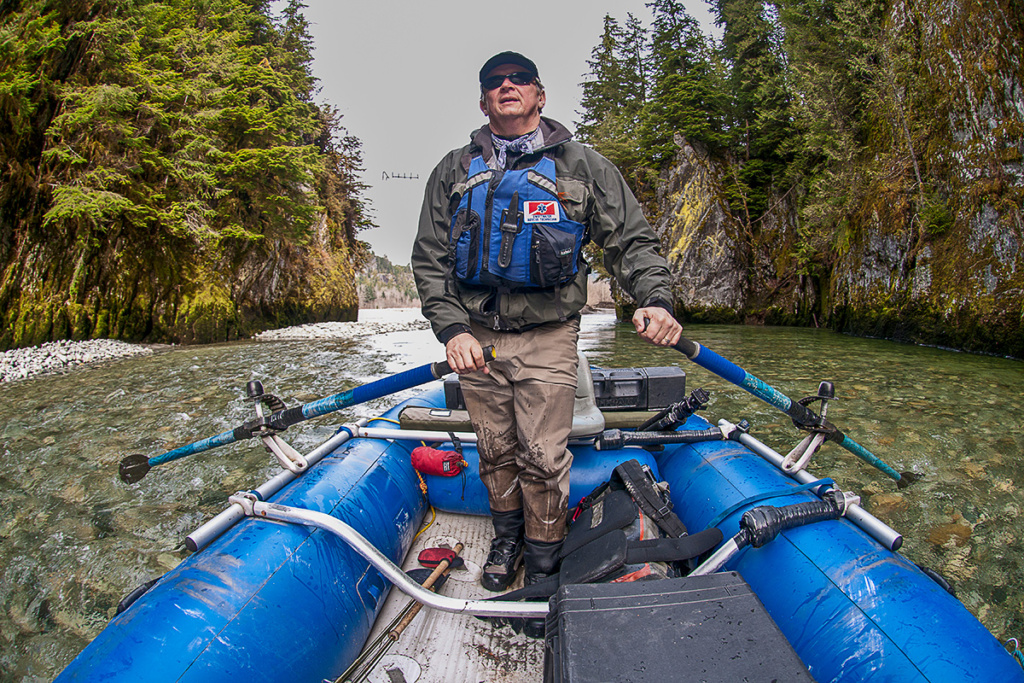
Fun Facts
In the past 45 years, I found some time to be a Mountain Rescue team leader, a White-Water Raft, and a Fly-Fishing Guide taking every advantage of the outdoor lifestyle that British Columbia can offer.
I always like to tell people, “I am a professional Fly Fisherman and Amateur Photographer,” but photography is my greatest passion, which is also my profession. That passion started way back in 1973.
Nick Didlick lives in Vancouver, Canada, with his wife and their two robotic dogs, Aibo and Aigal. You can follow them @aibovancouver

Nick Didlick -April 2023
